By Jon Diamond
The style of leadership practiced in Britain’s Eighth Army during the early years of the Desert War left much to be desired. During this time, the majority of British field commanders preferred to exercise command far behind the lines. One factor causing this was the limitations on signals technology and communication equipment.
Also, after the capture of Lt. Gen. Richard O’Connor, the architect of the spectacularly successful Operation Compass, the first major Allied military operation of the Western Desert Campaign during World War II, in April 1941, Middle East senior British commanders and staff officers exercised considerable care to avoid becoming unnecessary casualties or captives of the Axis forces.
Command of the 1st Armored Division
General Sir Frank Walter Messervy, the son of a bank manager, was born in Trinidad on December 9, 1893. A graduate of Eton College and Sandhurst Military Academy, he was commissioned into the Indian Army in 1913. During World War I, he joined the 9th Hodson’s Horse in 1914. From 1914 to 1918, he served in France, Palestine, and Syria. In 1919, he was transferred and served in Kurdistan.
From 1932 to 1936, Messervy was appointed an instructor at the Command and Staff College, Quetta. In 1938, he became commander, 13th Duke of Connaught’s Own Lancers, in India. When World War II broke out, he was serving as the General Staff Office (GSO) 1 of the 5th Indian Division. In the middle of 1940, the division was sent to the Sudan to counter the threat from Mussolini’s forces in Italian East Africa.
In the autumn of 1940, Messervy was appointed commander of Gazelle Force, which was a mobile reconnaissance and strike force created from components of the 5th Indian Division, and his troops enjoyed much success against the Italians. In early March, Messervy was promoted to command the 9th Infantry Brigade of the 5th Indian Infantry Division and played a significant role in the Third Battle of Keren. Elevated to brigadier for only six weeks, Messervy was promoted to command the 4th Indian Infantry Division.
Messervy’s first exposure to German captivity occurred as commander of the 1st Armored Division. The division’s previous commander, Maj. Gen. Herbert Lumsden, had been wounded within a few days of the completion of Operation Crusader (the successful relief of the 1941 Siege of Tobruk), and Messervy replaced him. Messervy found himself with a division that for nearly a year had suffered frustration and fragmentation and was in a highly unsatisfactory state as a result.
Messervy’s new division was surprised and nearly shattered by German forces of the Afrika Korps under General Erwin Rommel at Antelat on January 22, 1942, setting in motion the loss of territory gained by the Eighth Army’s costly victory in Operation Crusader. On January 24, Rommel decided to advance toward Msus and trap the remaining armor of the 1st Armored Division. Messervy opted to make a stand against Rommel for two reasons. First, Messervy’s command was cut off from its main supply base at Msus, and, second, since the Eighth Army’s forward supply depot was also at Msus, Messervy correctly feared that if Rommel captured it intact it could be used as a springboard from which he could repeat his famed offensive of the previous April.
If the 1st Armored Division could hold the Afrika Korps, then with reinforcements there was a possibility that Rommel could be pushed back to his start line in Tripolitania. Unfortunately for Messervy, the troops under his command were not up to the task. Early on January 25, German panzer divisions moved north against Messervy’s division and literally drove it from the field. According to Afrika Korps General F.W. von Mellenthin, “At times the pursuit of the British tank units attained a speed of 15 miles per hour, and the British columns fled madly over the desert in one of the most extraordinary routs in the war.”
Messervy and the Desert Rats
When Lumsden had recovered and resumed command of 1st Armored Division, Messervy took over the 7th Armored Division (Desert Rats), which lost its commander, Jock Campbell, in a fatal automobile accident. On February 26, 1942, the day of Campbell’s accident, Messervy was en route to India to assume command of the 1st Indian Armored Division. Despite being ordered to return expeditiously to the Western Desert, Messervy instead continued his trek to Calcutta to visit his hospitalized daughter, who had suffered a traumatic spine injury. It had been rumored that Messervy had India on his mind during the upcoming Gazala battle, with his daughter nearly crippled in Calcutta and the Japanese advancing west on India with the somber anticipation that Calcutta was soon to be bombed.
Messervy, the Desert Rats’ new general, was brave and personable. He was described as “tall, athletic looking, with a facial expression that clearly showed his strong sense of purpose.” Messervy was known as the “Bearded Man” because he tended not to shave prior to a battle. His reputation was one of a frontline officer known for his dash and bravery. Strong religious faith contributed to his courageous demeanor. However, he had the dubious distinction of being an Indian Army officer commanding a British division during World War II. In the tradition-bound British Army, this was more than a trivial circumstance.
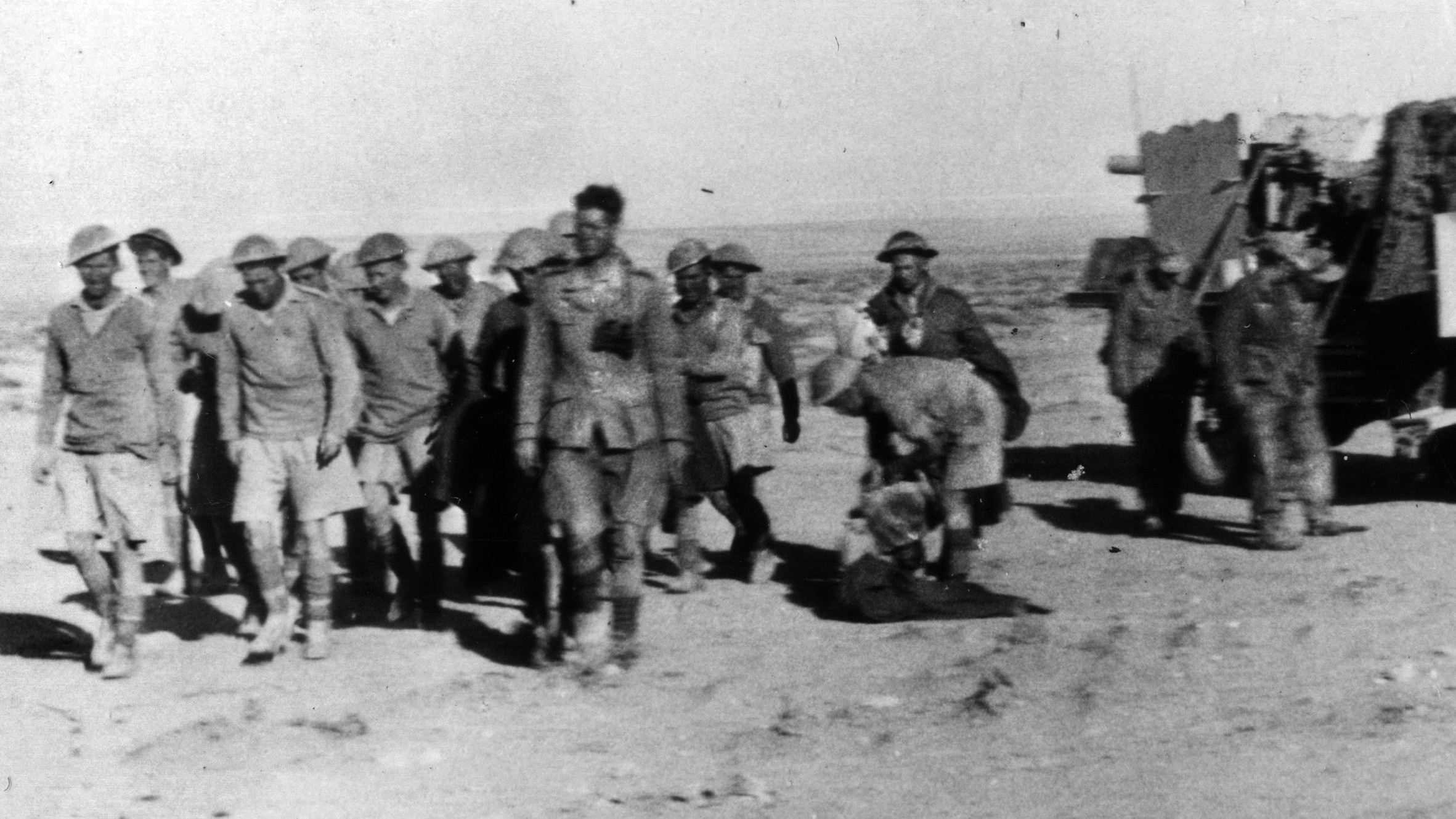
Further adding to his drawbacks as commander of the 7th Armored Division was that he had no training and very little experience with tanks despite his cavalry background. Some of Messervy’s junior officers, trained in mechanized warfare, found this fact frustrating and frightening. These circumstances did not augur well for Messervy during the spring and summer of 1942.
“Aren’t You a Bit Old For a Private?”
By 9 am on May 27, 1942, the Retma “box” in the Gazala line had been destroyed and the German 90th Light Division was driving toward Bir Bemid, setting into motion Messervy’s actual brief stay in Nazi captivity. Shortly after 10 am, the command post of the 7th Armored Division was overrun by German armored cars. Messervy and his staff failed to appreciate how rapidly the Germans were advancing.
Messervy and a few members of his staff tried to escape in his armored command vehicle, but a German armored car spotted it and fired several 30mm shells into its side. Then another attacked it from the front and fired several shells into the engine. The driver was killed. One of Messervy’s staff edged open the door and told the general that vehicles all around were on fire and that a German armored car had its guns trained on them. Messervy and several officers began to set the cipher code books on fire, and the Desert Rats’ commander tore off his badges of rank as they all exited the vehicle with their hands raised. The Germans had rounded up a group of astonished British officers and administrative personnel who proved to be none other than the advance headquarters of the 7th Armored Division.
In their excitement, the German captors failed to attach any importance to the graying hair of one of the “privates.” In fact, this “private,” passing himself off as the officers’ batman, was Messervy minus his badges of rank. When asked by a German officer, “Aren’t you a bit old for a private?” Messervy replied, “You’re right! It’s a bloody disgrace they’ve called me up at my age.”
The prisoners were put into captured British trucks and driven east with one of the advancing German columns. Initially, they thought to overpower their driver; however, this became unnecessary when their captors came under heavy British artillery fire. When the German driver leaped out of the truck’s cab, Messervy escaped with some of his staff and hid under an artillery tarpaulin in a wadi until nightfall. The group walked eastward throughout the night. In the morning, the escapees were approached by some British vehicles, and their liberation was complete. For hours, the 7th Armored Division had been without a command structure.
A third potential capture of this British general occurred on June 12, 1942. Messervy wished to concentrate his division by moving the 4th Armored Brigade to join with his 7th Motor Brigade. His brigadiers disagreed with the plan, and in a furious state he set off to confer with General Willoughby Norrie, the XXX Corps Commander, at his headquarters. En route, Messervy lost contact with his division and was almost caught by an enemy patrol, forcing him to spend the entire day hiding at the bottom of an abandoned well in the desert.
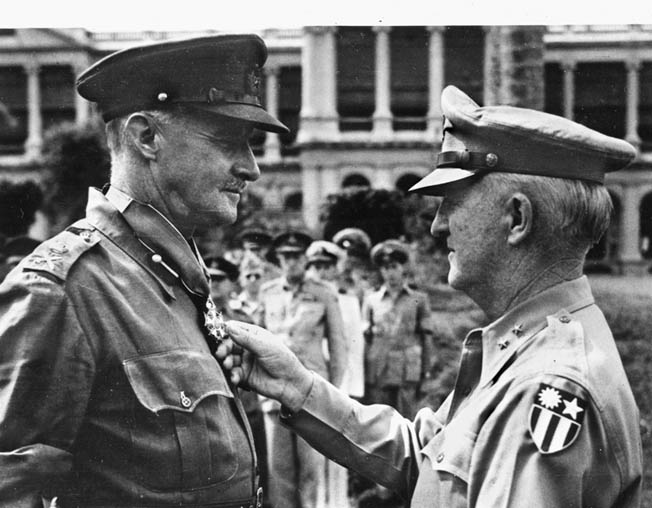
In the meantime, the disobedient brigadiers sat in position and waited for further orders, although Messervy attempted to direct the battle by radio from his hiding place. Norrie and Lumsden were ignorant of Messervy’s whereabouts and issued contradictory instructions. It was apparent that no commander was in control of the battlefield.
“Ritchie was All Haywire by Then”
As the Gazala battle raged, Messervy began to have some disagreements with the Eighth Army commander, Lt. Gen. Neil Ritchie. Some of this discord stemmed from earlier events during Operation Crusader. During the Crusader battles of January-February 1942, Messervy said, “Ritchie was all haywire by then. All for counter-attacking in this direction one day and another the next. Optimistic and trying not to believe that we had taken a knock. When I reported the state of 1st Armored Division to him at a time when he was planning to use it for counter-attack, he flew to see me and almost took the view that I was being subversive.”
Messervy’s profound doubt as to Ritchie’s intellectual and personal grasp of war in the desert did not prevent the Eighth Army commander’s subordinates from admiring him as a man. Messervy summed it up. “He was an absolutely honest, downright soldier who was put into a position which at the time was beyond his capacity. Although he had leadership and powers of command, he was thrown into a very difficult position before he had had time to develop methods of command.”
Specifically in regard to Rommel’s attack at Bir Hacheim on May 26, 1942, Messervy was not convinced that the German attack was going to come from the north. Messervy stated to his superiors, “I gave it as mine that Rommel would come round our left flank, and that therefore we should dispose the armor to fight as a corps and not piecemeal.”
Ritchie, among others, thought it was impossible for Rommel to come around the left flank; rather he would try to break through the center of the British line. The eventual disposition pinned the 7th Armored Division on the left flank of the British line with the other armored division miles away on the northern flank. When Messervy began to receive information proving a major German attack on the left flank, he asked permission to take up battle stations that had been planned in the event of such an Axis assault, as he had predicted. Ritchie refused. He wanted to wait until Rommel’s main blow was known. By morning it was too late. In the early hours of May 27, 1942, Rommel drove toward Bir Hacheim with 500 tanks.
On the afternoon of June 9, 1942, contradicting Ritchie’s exhortations to hold out, Messervy, as overall commander of the 1st Free French Brigade, had signaled to ask its brigadier, Pierre Koenig, if it now seemed advisable to pull out of Bir Hacheim. Koenig replied that if transport could be brought close enough to evacuate his wounded, he would. Unfortunately, Messervy could not organize such a complicated maneuver in less than 24 hours, and the ordeal of the polyglot French defenders of Bir Hacheim continued throughout June 10, 1942.
Ritchie himself continued to display that curious personal blend of sangfroid and indecision. He still could not hit upon a basic battle plan, and this want of purpose began to be appreciated more widely in the ranks of Eighth Army, with damaging effects on morale. Messervy believed that after Bir Hacheim fell on June 11, 1942, British and Commonwealth forces should have fallen back immediately to a strong position. But Ritchie’s intentions were not evident.
About this time, in the desert Messervy met one of his brigadiers, who asked, “What is the main idea in the battle now?”
Messervy answered, “I wish I knew—the only real order is to fight Germans wherever you see them.”
32 of 90 Tanks Lost
On June 17 another disastrous tank action occurred, ending the hope of supporting the garrison defending the major Libyan port city of Tobruk. With cavalry pennants fluttering in the breeze, Messervy ordered the 4th Armored Brigade to attack the German 21st Panzer Division. It was the last charge of British armor in the Gazala battle.
After losing 32 of 90 tanks, Eighth Army no longer possessed a battleworthy tank arm. This defeat rendered Eighth Army helpless, prompting Ritchie to relieve Messervy of command of the 7th Armored Division. In telling Messervy of this decision, Ritchie did display courtesy and generosity: “Well Frank, I’m afraid I’ve lost confidence in you. You seem to be out of luck. Nothing seems to be going right with you.”
After receiving this news, Messervy informed one of his staff officers, Peter Vaux, “I’ve come to say goodbye, Peter, and thank you for all you and your chaps in there have done for me. The army commander says that he has lost confidence in me. I’ve got to leave you.”
Messervy, although brave and decent, was considered by some to be unsuitable for command of an armored division. His instinct to lead from the front was a good one, and it was partly bad luck that evading capture had kept him from headquarters at crucial times. It is ironic that soon Ritchie was to be removed from command of Eighth Army.
Messervy was transferred to Cairo as the deputy chief of General Staff, GHQ Middle East Command. A few months later, he was sent to India to raise the 43rd Indian Armored Division as its commander. This division was originally intended to serve in Persia but was disbanded in April 1943 after the threat to Persia disappeared.
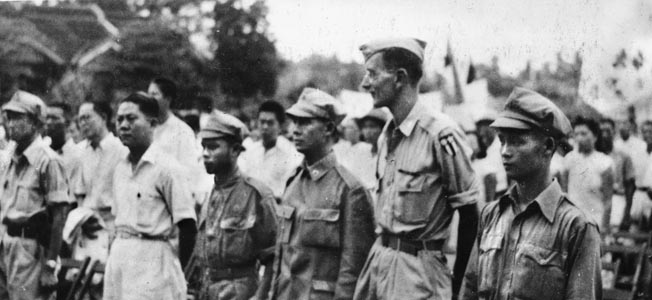
Messervy was made director of armored fighting vehicles (AFV), General Headquarters, India Command in 1943, where ironically, in light of his perceived failure as a tank division commander in the Western Desert, he argued successfully to include heavy tanks in Burmese operations. This led to a significant advantage for General Sir William Slim’s Fourteenth Army in 1943 and 1944 against the more lightly armored Japanese tanks.
Defense of the Admin Box
In July 1943, Messervy was appointed to command the Indian 7th Infantry Division, which was sent to the Arakan, a coastal province in Burma, to join XV Corps in September. As Slim wrote in his memoirs, “Some weeks later another division, the 7th Indian, joined XV Corps. It had not been tried in war, but there was a freshness and a keenness in all it did, which received an imaginative lead from its new commander, Major-General Frank Messervy…. He had had his ups and downs as a divisional commander in the Middle East, but I welcomed him as an offensively minded leader, steadied by experience and misfortune in a hard school.”
In concert with Brigadier Orde Wingate’s Operation Thursday, a deep penetration behind Japanese lines in northern Burma, the second Allied offensive into the Arakan started. The 5th Indian Infantry Division attacked down the coastal plain, while in the east, the 7th Indian Infantry Division, commanded by Messervy, was to secure a mountain road crossing. However, the Allied advance also coincided with the start of the Japanese HA-GO offensive to capture eastern India.
On February 5, 1944, a Japanese composite group, the Sakurai Force, infiltrated the front lines of the 7th Indian Division, which was widely dispersed. The next day the Sakurai Force attacked the headquarters and reserve brigade of Messervy’s 7th Indian Division at Launggyaung. Messervy’s divisional headquarters was smashed and scattered, reminiscent of his close calls in the Western Desert against the Afrika Korps.
The Japanese had cut the Ngakyedank Pass road. There was heavy fighting with the 7th Division’s signalers and clerks, who were pressed into combat service and eventually had to destroy their documents and equipment and begin a retreat. Messervy led one group out himself, followed by several of his headquarters personnel who had made their way in small parties through Japanese forces, ultimately reaching the Admin Box, an administrative area at Sinzweya, which was converted into a defended area much like a defensive “box” in the Western Desert.
The Admin Box was commanded by Brigadier Geoffrey Evans, and among a variety of battalions from different regiments were two troops of M3 Lee Tanks of the 25th Dragoons. It must be remembered that it was Messervy, who as director, AFV Headquarters, successfully argued to include heavy tanks, such as the M3 Lee and M4 Sherman, in the Allied armored contingents.
Allied transport aircraft dropped rations and ammunition to the cut off troops defending the Admin Box. Every Japanese attempt to overrun the defenders was thwarted by the tanks, against which the Japanese had no effective ordnance except for a few mountain guns, which were out of ammunition. By February 22, the Japanese, who were starving, were forced to withdraw. British forces from XV Corps reserve divisions broke through the Ngakyedauk Pass to relieve Messervy’s 7th Indian Division.
Messervy’s Last Command
Messervy was promoted to command the Indian IV Corps, which played a pivotal role in the seizing of Meiktila and the taking of Rangoon. In a poignant moment, Messervy, after being knighted on July 5, 1945, handed over command of IV Corps to Lt. Gen. Francis Tuker, former commanding general of the 4th Indian Division, an old command of Messervy in North Africa. Messervy also led the troops that captured Malaya from the Japanese and took the surrender of 100,000 enemy troops at the Victoria Institution, Kuala Lampur.
Just prior to the partition of India, Messervy was made general officer, commander in chief, Northern Command India in 1946. Finally, when the nation of Pakistan came into being, he served as commander in chief of Pakistan’s army from 1947 to 1948. He retired from the British Army as a full general in 1948.
Frank Messervy died in Midhurst, Sussex, on February 2, 1974, almost 30 years to the day after his fourth and last harrowing action to avoid capture by an enemy force, thereby being the true embodiment of a frontline general.
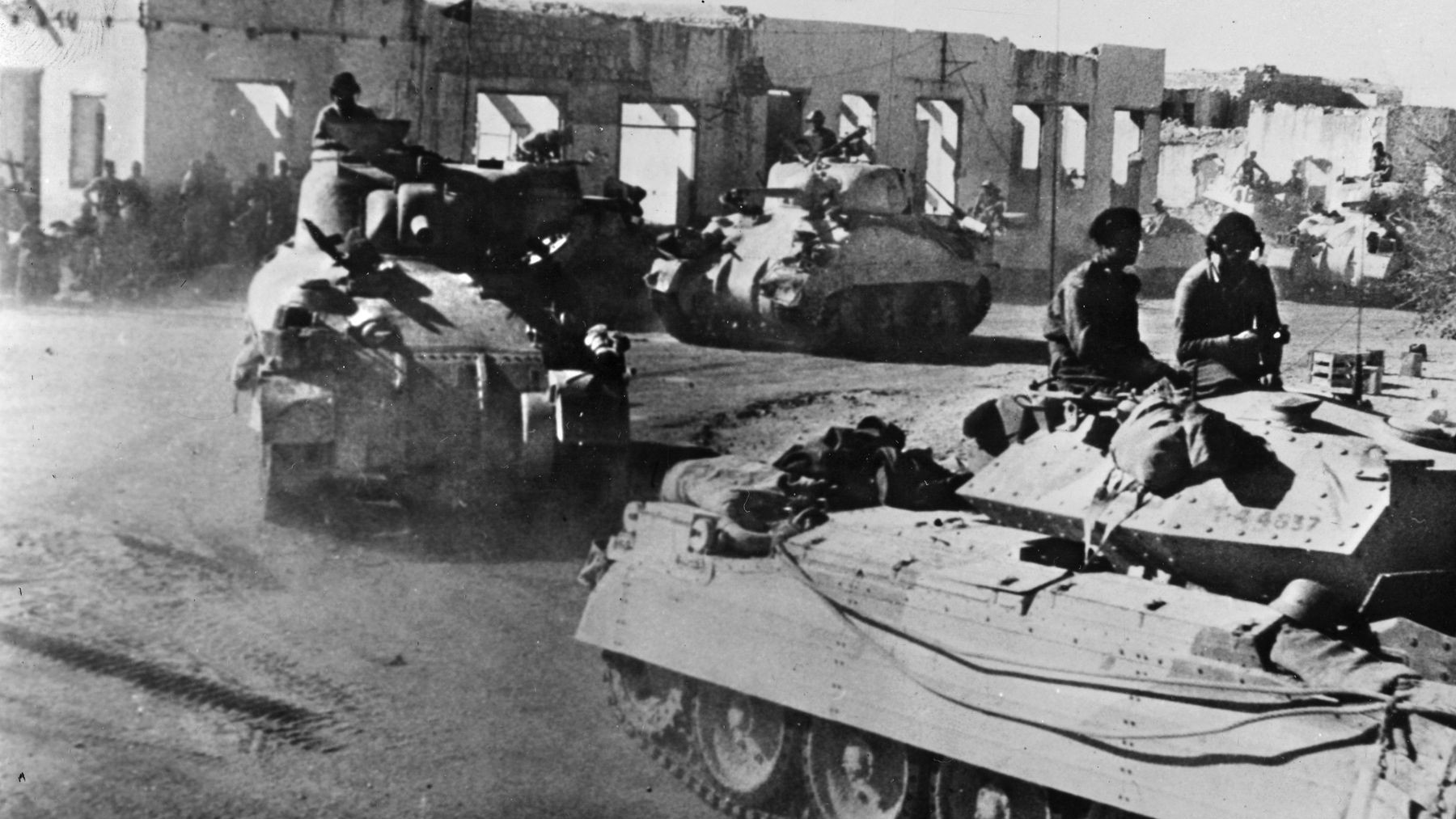
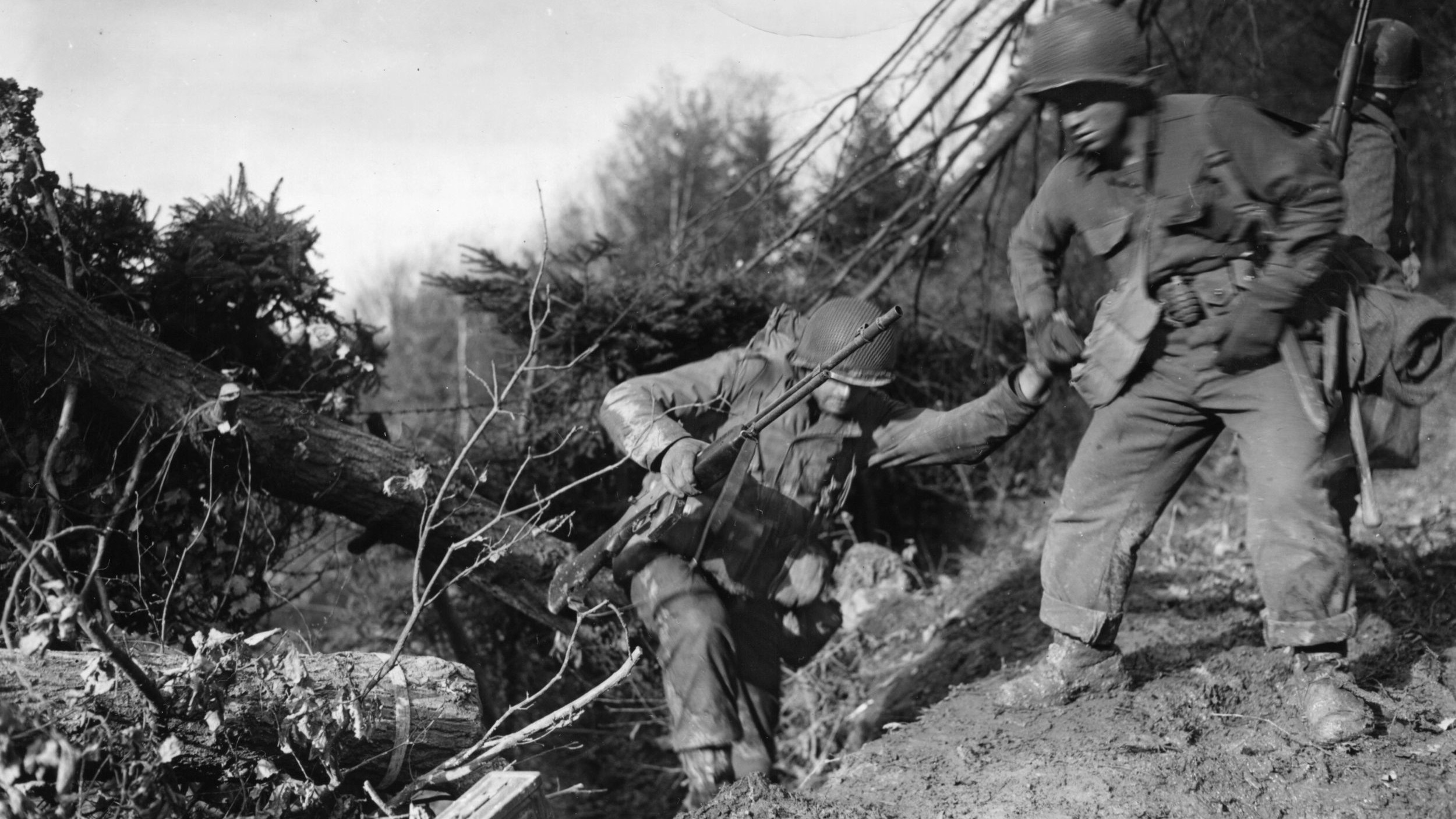
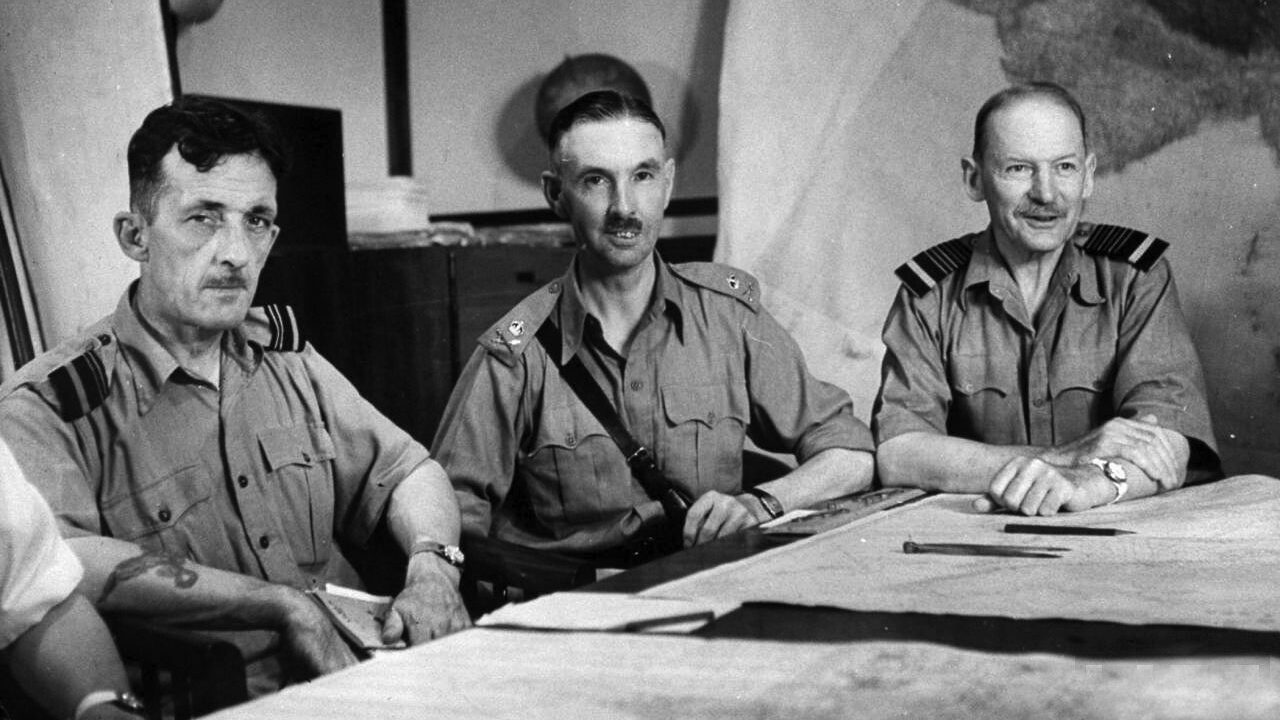
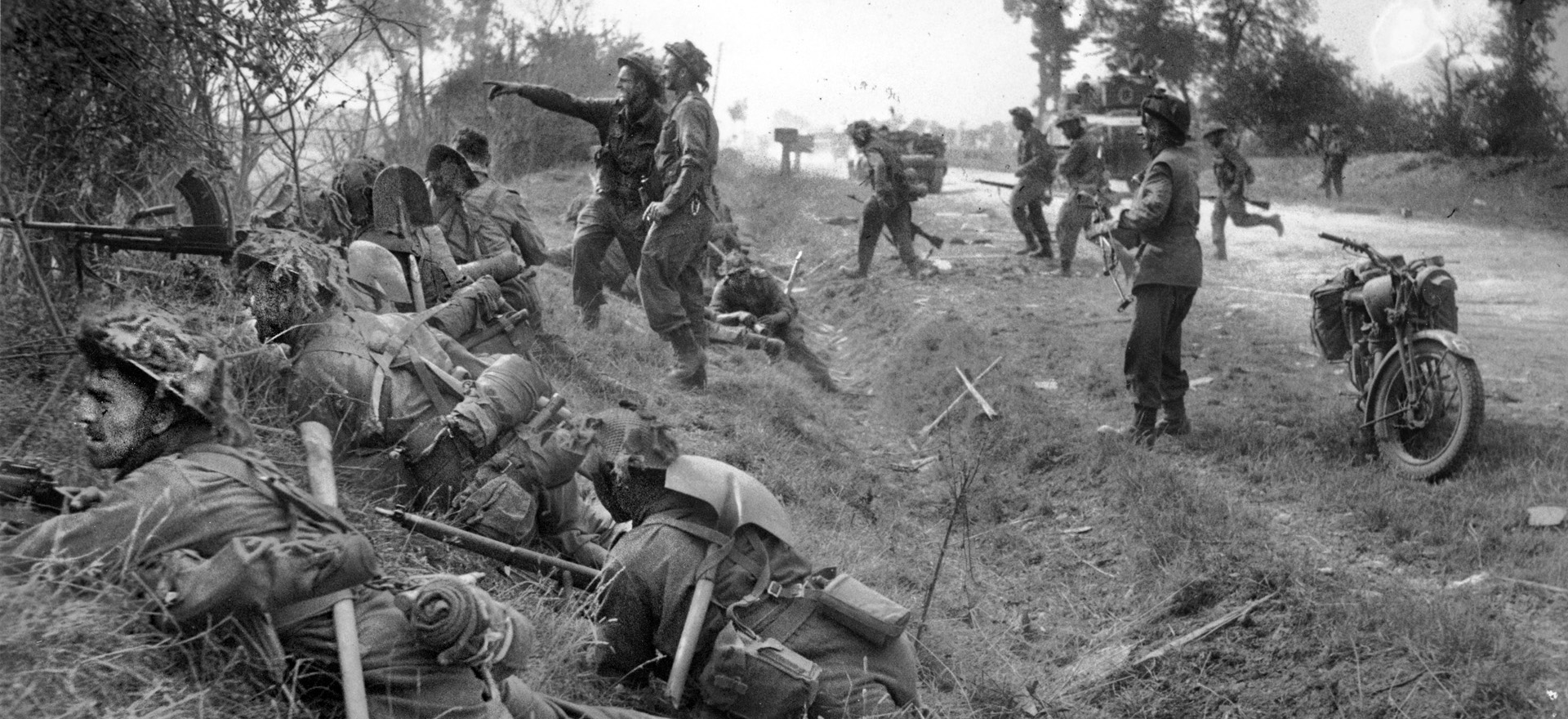
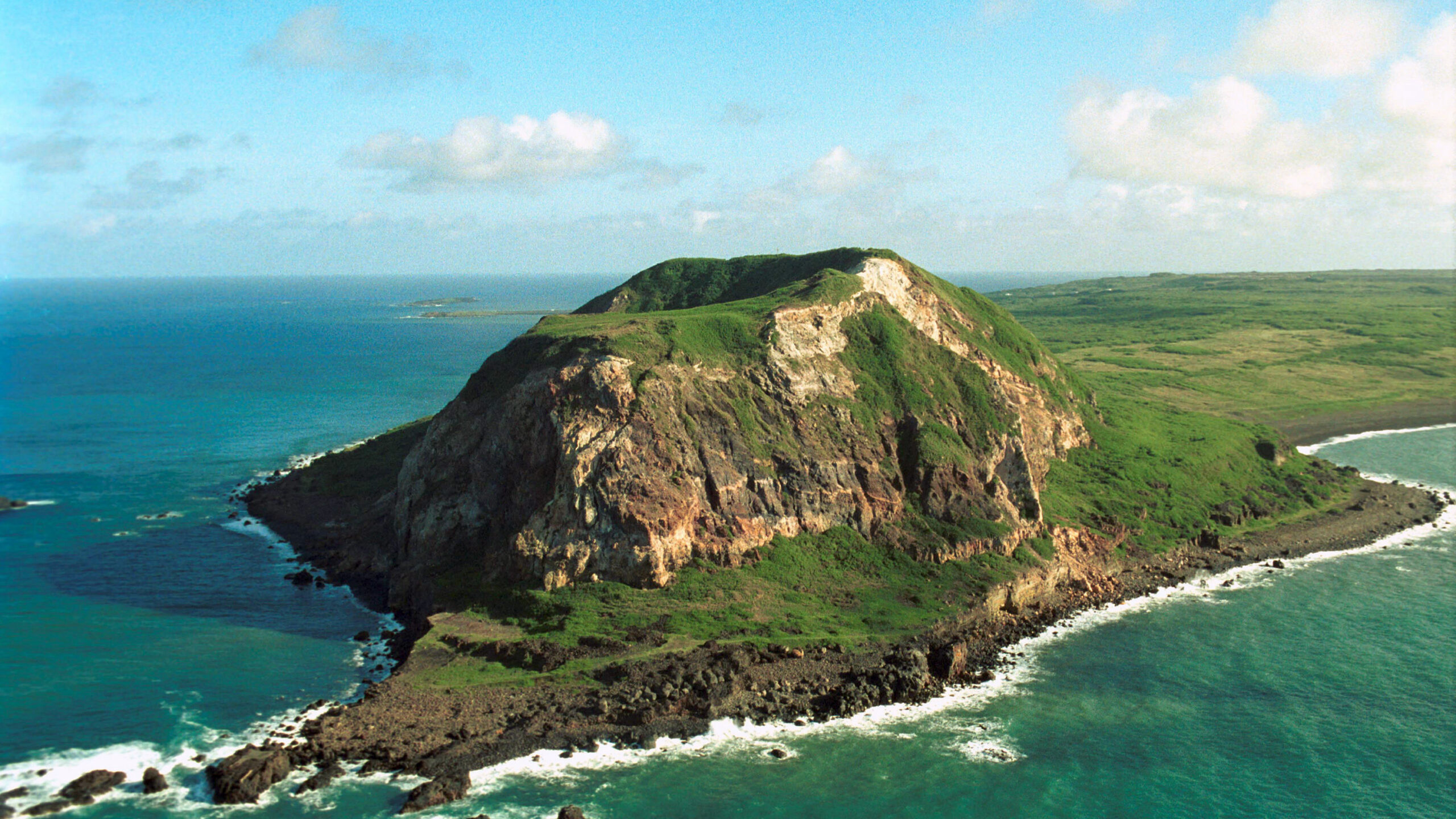
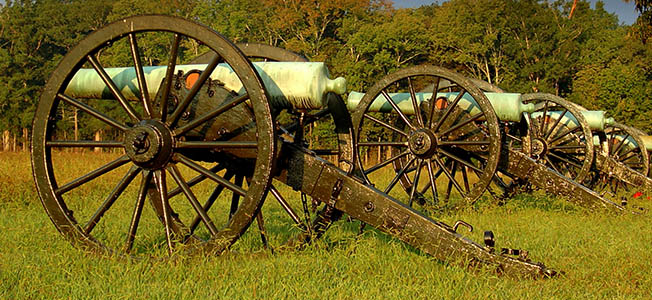
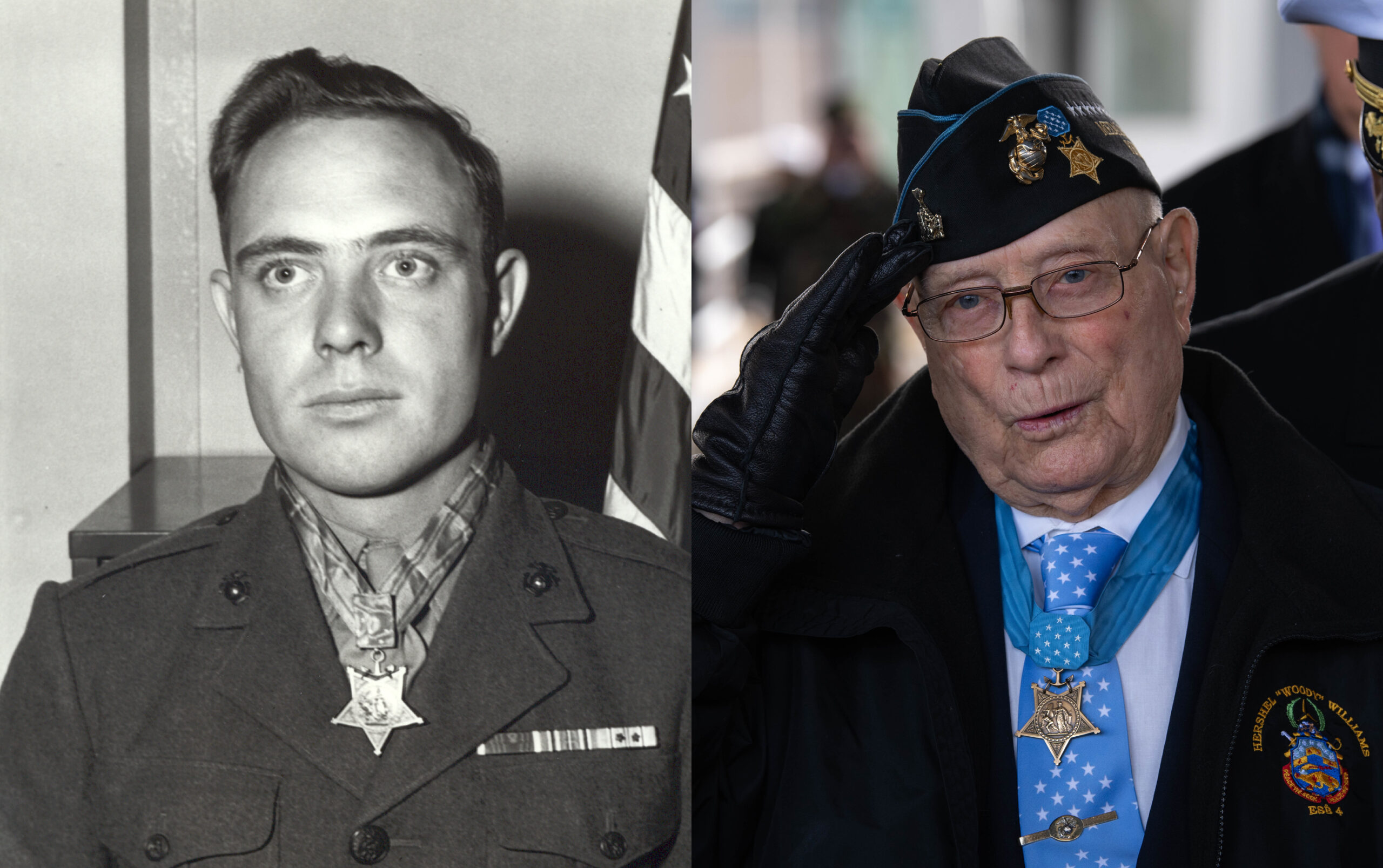
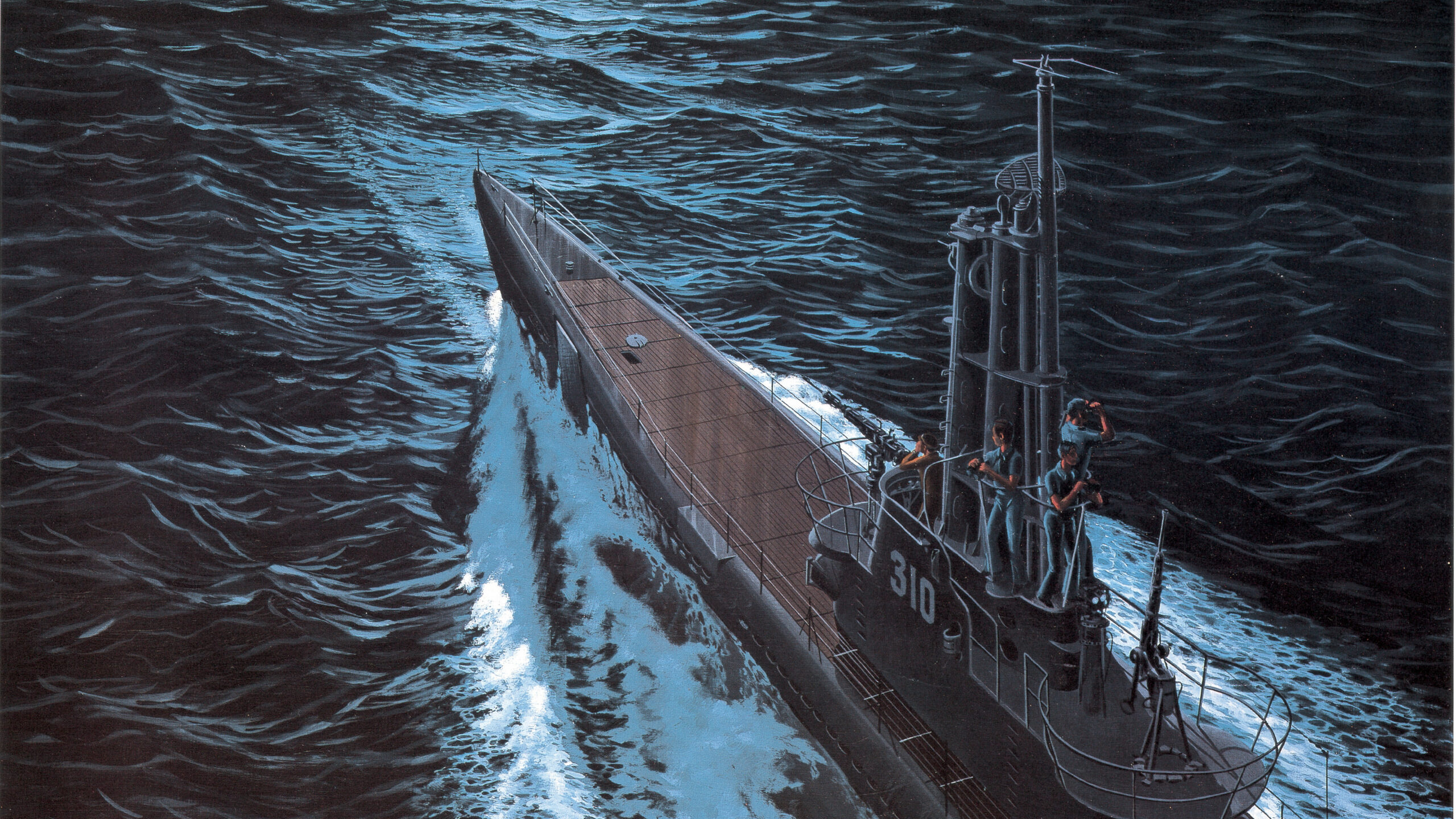
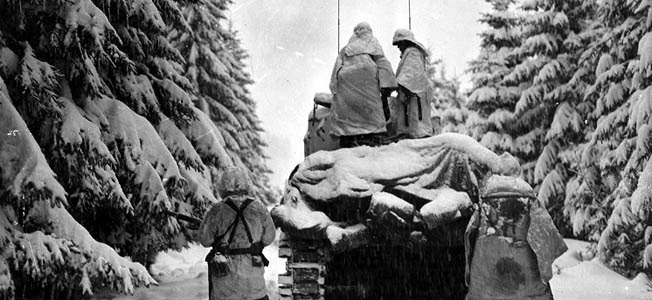
Join The Conversation
Comments
View All Comments